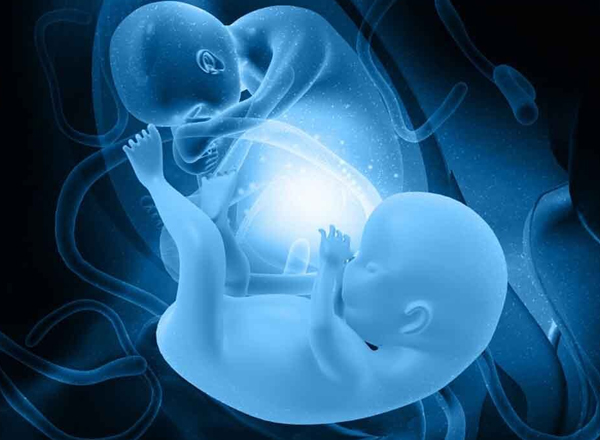
A twin pregnancy occurs when a woman carries two fetuses in her uterus simultaneously. Twins can be either identical (monozygotic), where a single fertilized egg splits into two embryos, or fraternal (dizygotic), where two separate eggs are fertilized by two different sperm.
Here are some key aspects of twin pregnancies:
-
Types of Twins:
-
Identical (Monozygotic): Result from the splitting of a single fertilized egg. Identical twins share the same genetic material and are usually of the same sex.
-
Fraternal (Dizygotic): Result from the fertilization of two separate eggs by two different sperm. Fraternal twins may or may not share the same sex and have about the same genetic similarity as non-twin siblings.
-
-
Increased Risks:
-
Twin pregnancies are considered higher risk compared to singleton pregnancies. There is an increased likelihood of complications such as preterm birth, low birth weight, and gestational diabetes.
-
-
Prenatal Monitoring:
-
Twin pregnancies require more frequent prenatal visits and monitoring to assess the health of both fetuses.
-
Ultrasound examinations are commonly used to monitor growth, position, and well-being of the twins.
-
-
Growth and Development:
-
Twins may have different growth rates, and one twin may be larger or smaller than the other.
-
The healthcare provider closely monitors fetal development to identify any signs of growth restriction or other issues.
-
-
Preterm Birth Risk:
-
Twin pregnancies have a higher risk of preterm birth. The healthcare team will closely monitor for signs of preterm labor and take preventive measures when necessary.
-
-
Gestational Diabetes and Hypertension:
-
The risk of gestational diabetes and gestational hypertension is higher in twin pregnancies.
-
Regular glucose testing and blood pressure monitoring are essential.
-
-
Delivery Options:
-
The mode of delivery (vaginal or cesarean section) depends on factors such as the position of the babies, their health, and the mother's health.
-
Many twins are born via cesarean section, especially if they are in a breech or transverse position.
-
-
Neonatal Intensive Care Unit (NICU) Care:
-
Due to the increased risk of preterm birth, twins may spend time in the NICU to receive specialized care and support.
-
-
Breastfeeding Challenges:
-
Breastfeeding twins can present unique challenges, but many mothers successfully breastfeed both babies.
-
-
Postpartum Recovery:
-
Recovery after a twin birth may take longer, especially after a cesarean section. Adequate support and postpartum care are important.
-
Managing a twin pregnancy requires close collaboration between the pregnant individual and their healthcare team. Regular prenatal care, monitoring for potential complications, and timely interventions are crucial for the well-being of both the mother and the babies. Twin pregnancies often result in healthy outcomes, but the increased risks necessitate careful and specialized management.
